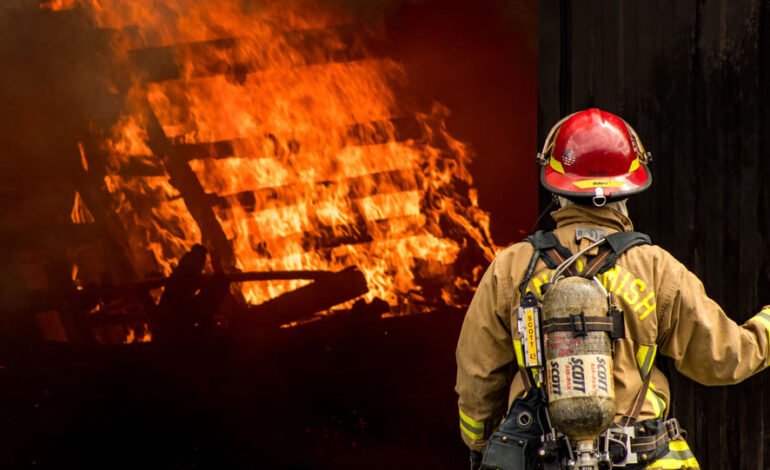PFAS Contamination: California and Other States That Are Limiting AFFF Use

Firefighters have used AFFF (aqueous film-forming foam) to extinguish dangerous flames, especially Class B fires that involve flammable liquids and petroleum products. Even though AFFF formulations have been effective in diffusing fires, they result in severe health issues.
The truth is all of us are exposed to PFAS and it is present in the bloodstream of every American. The Environment Working Group (EWG), stated that the presence of PFAS in water, consumer food, and products has been linked to many ailments and health conditions, such as developmental and reproductive issues, cancer, liver damage, high cholesterol, and thyroid diseases.
Today, specific PFAS chemicals are no longer manufactured in the United States because of the phase-outs. Additionally, several states are trying to limit the use of firefighting foam because of the health hazards it leads to. To learn more, read this article.
Firefighters Are at a Higher Risk
IPEN is a global network that also called “International Pollutants Elimination Network” that is all about raising awareness and making our chemical policies better over the time when it comes to harmful substances. Their main goal is to make sure we stop producing, using, and getting rid of dangerous chemicals in a way that hurts both nature and us humans.
FireRescue1.com published an article in 2021 that mentioned a white paper an IPEN expert panel shared in October 2019. It stated that explicit evidence from current studies highlights that firefighters who used AFFF have very high PFOS and PFHxS (perfluorohexane sulfonate) levels in their blood. Furthermore, the experts noted that firefighters are exposed to these toxic chemicals from multiple sources that includes:
- Making use of AFFF for fire training and suppression operations
- Managing any device contaminated with AFFF
- Coming in contact with a polluted PPE
- Handling PFAS foam wastes
According to David Andrews, a senior scientist at the EWG, first responders and firefighters are already exposed to harm daily. Even when there are alternatives, they use firefighting foams with harsh chemicals that place them at a high risk of long-term health hazards.
If you too have been exposed to this toxic foam and have developed any chronic ailment, you can file a firefighter foam lawsuit. It will enable you to seek legal compensation to cover the losses you’ve witnessed. It will also help raise awareness about the dangers of this toxic foam on human health.
California Decides to Ban AFFF Use
California has decided to stop the use, manufacturing, and sales of firefighting foam in 2022. Governor Gavin Newsom had signed the legislation regarding banning this toxic foam from the state with a few exceptions. According to the Environmental Working Group, nearly 7.5 million people in this U.S. state have toxic non polymeric PFAS in their daily drinking water. The level is estimated to be 1 part per trillion.
Under the new law, it is necessary for companies selling firefighting gear to alert the customers if it has added PFAS. However, the ban has only one exception – that it will allow the use of Class AFFF whenever needed by the firefighting law, for instance, under the Federal Aviation Administration guidelines for the aircraft industry.
Other States That Are Limiting AFFF Use
Over a dozen states other than California banned the use of AFFF and many have issued regulations on the use, production, and disposal of the firefighting foam. In terms of restrictions, the rules vary. There are a few states that have banned the use of this foam in military and fire training. They only approve its use when active fires need to be extinguished.
Vermont and Connecticut have executed a take-back program to incentivize people to dispose of AFFF safely. TorHoerman Law shares that government agencies have started to implement initiatives to destroy PFAS and even phase out this toxic foam.
Even the EPA (Environmental Protection Agency) has created a council for securing public health and nature from the side effects of PFAS exposure. The agency has developed a plan to address this growing concern from a governmental perspective.
Letitia James, an Attorney General in New York State, mentioned plans to sue many AFFF foam manufacturers. Michigan reported lawsuits against 33 firefighting foam companies. James alleged that these companies recklessly, knowingly, and intentionally supplied this foam, being fully aware that it can contaminate the environment and cause injuries to human health.
Phil Weiser, an Attorney General, in Colorado, sued 15 companies that were manufacturing firefighting foams. The allegations were the same–that is they knew about the probable health hazards of AFFF exposure and still kept producing and marketing the product. The state had urged these manufacturers to pay for the expenses needed to clean up the PFAS-contaminated sites.
Even North Carolina had sued 3M and 13 other firefighting foam manufacturers for similar reasons. The state had asked the courts to order these companies to cover PFAS cleanup at air bases, firefighting training sites, and airports. The attorney general of the state also asked for punitive damages.
Furthermore, the AFFF lawsuits are consolidated into MDL to restructure the proceedings and expedite settlements. A few legal claims that the state government brought were sent to the current MDL and have been added to other civilian complainants.
Conclusion
In conclusion, everyone is aware of the fact that AFFF exposure can harm both firefighters and any other person who inhales it. The health conditions can range from different types of cancer to fertility issues and high cholesterol levels. Compensating the victims for their losses is not enough. It is necessary to ensure that this foam doesn’t cause increased damage. For this, several states have decided to ban and restrict the use of AFFF to secure human health and the environment.














